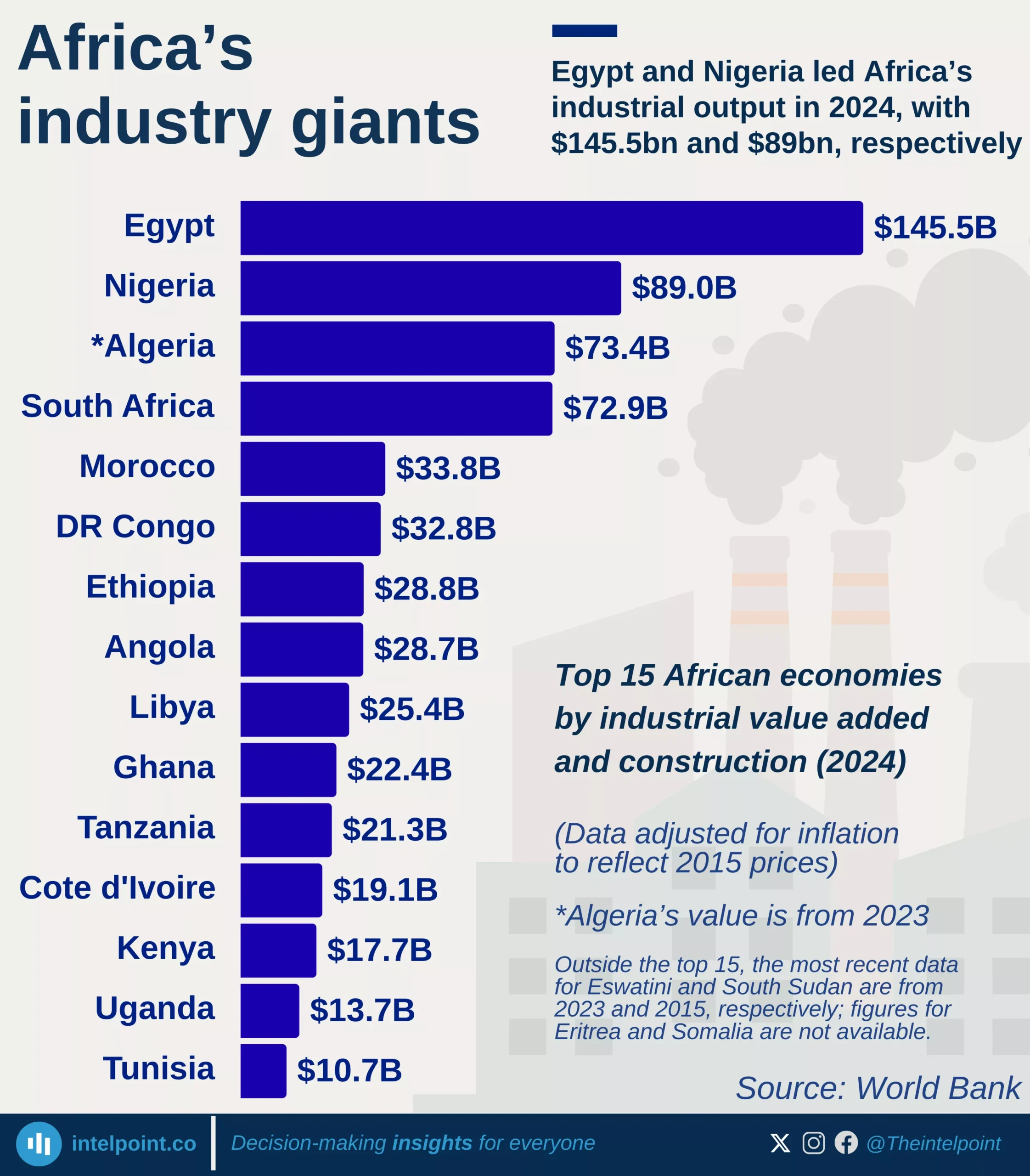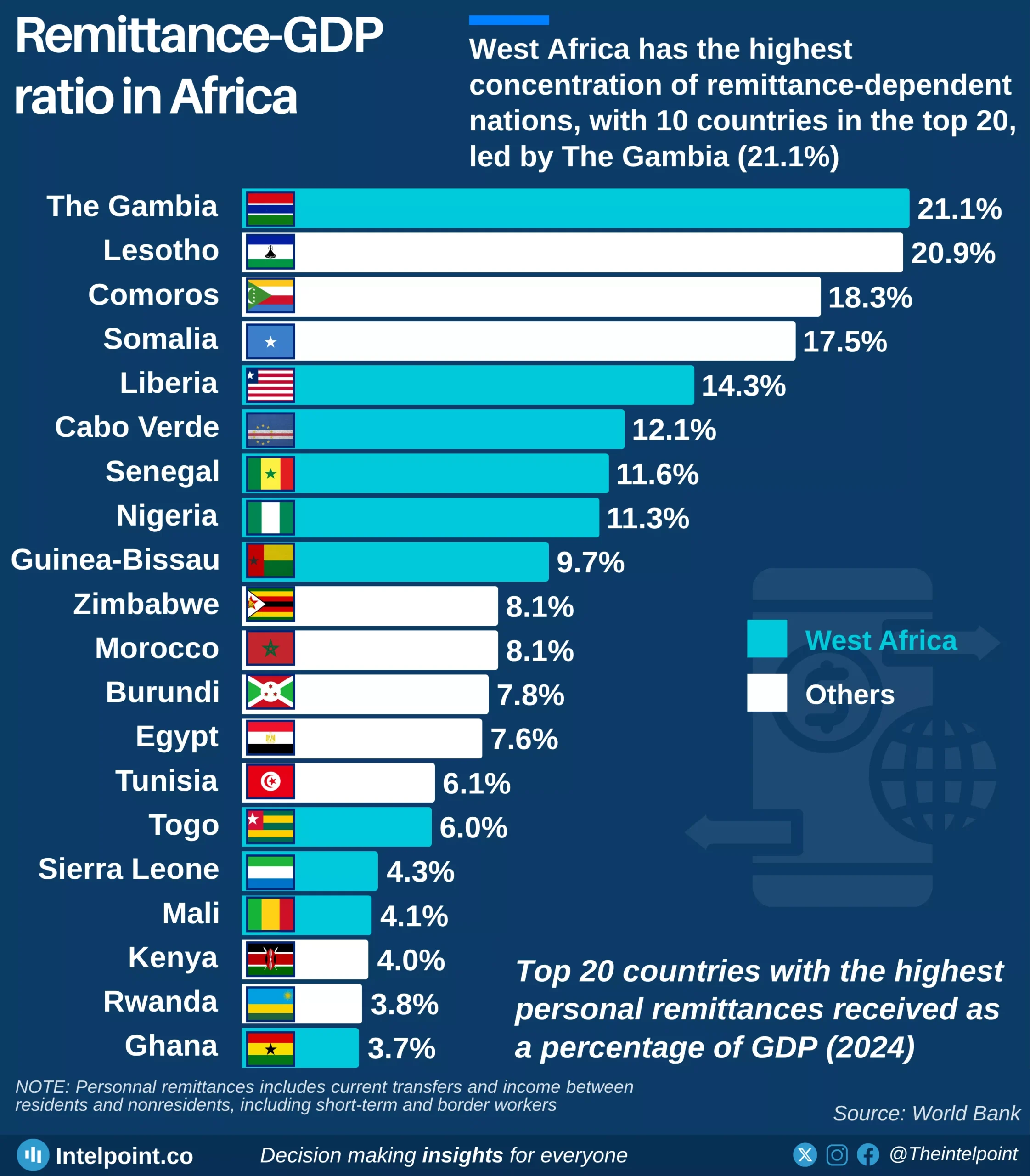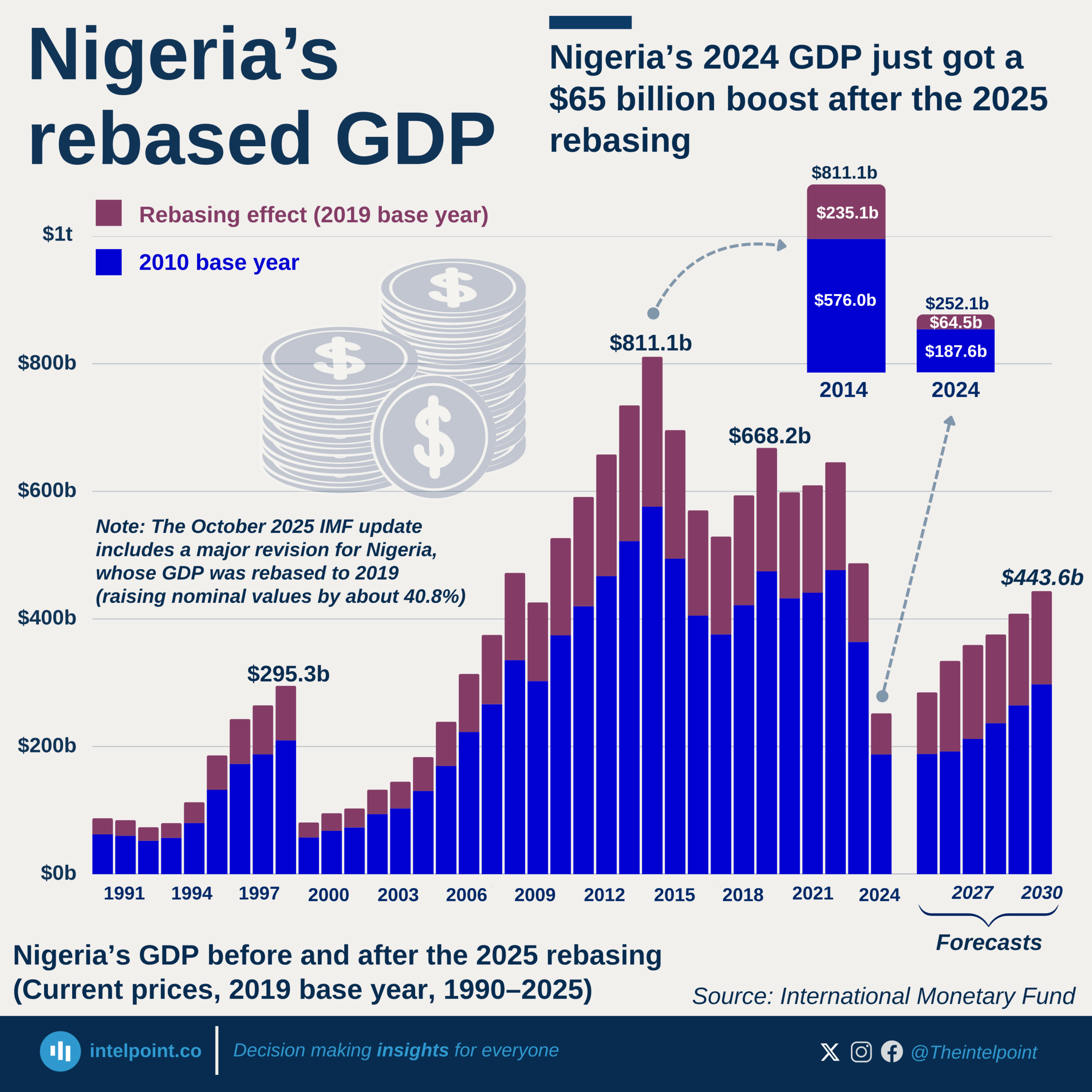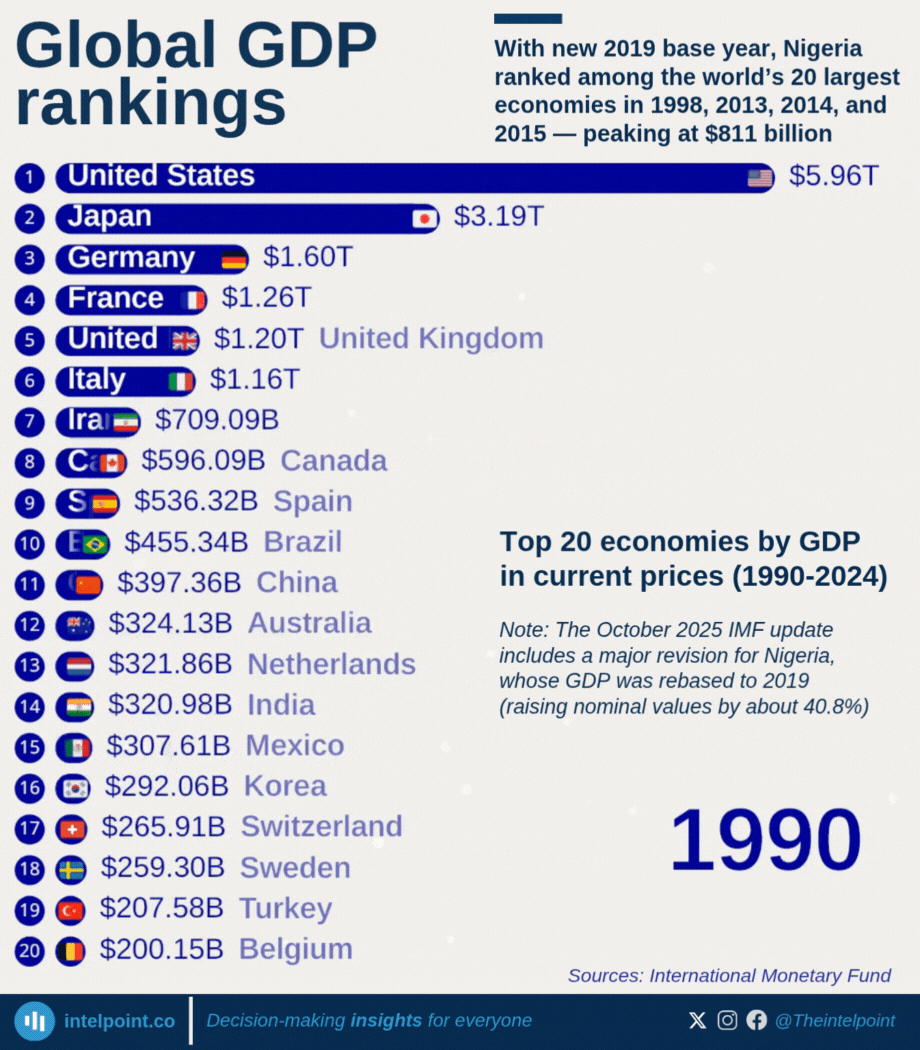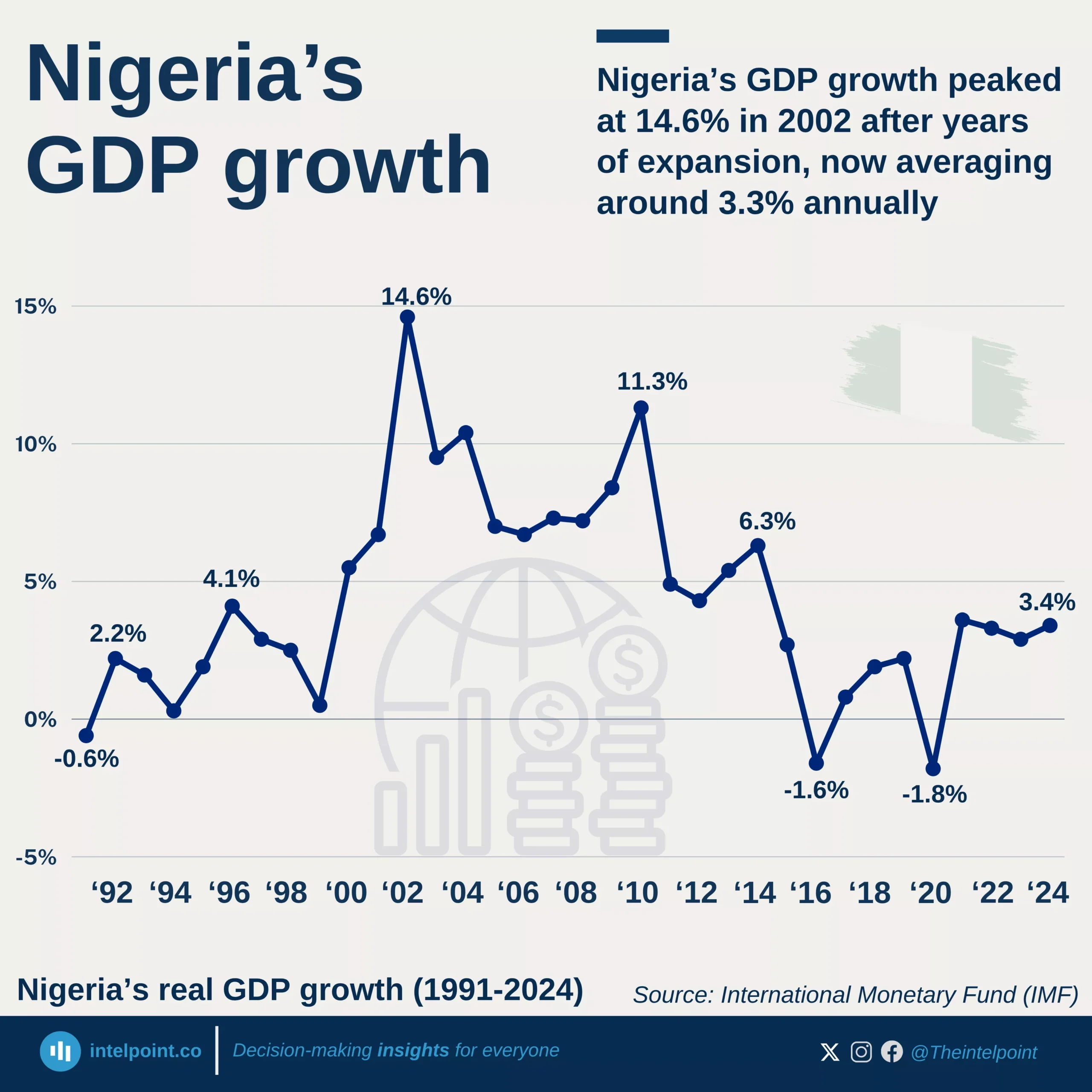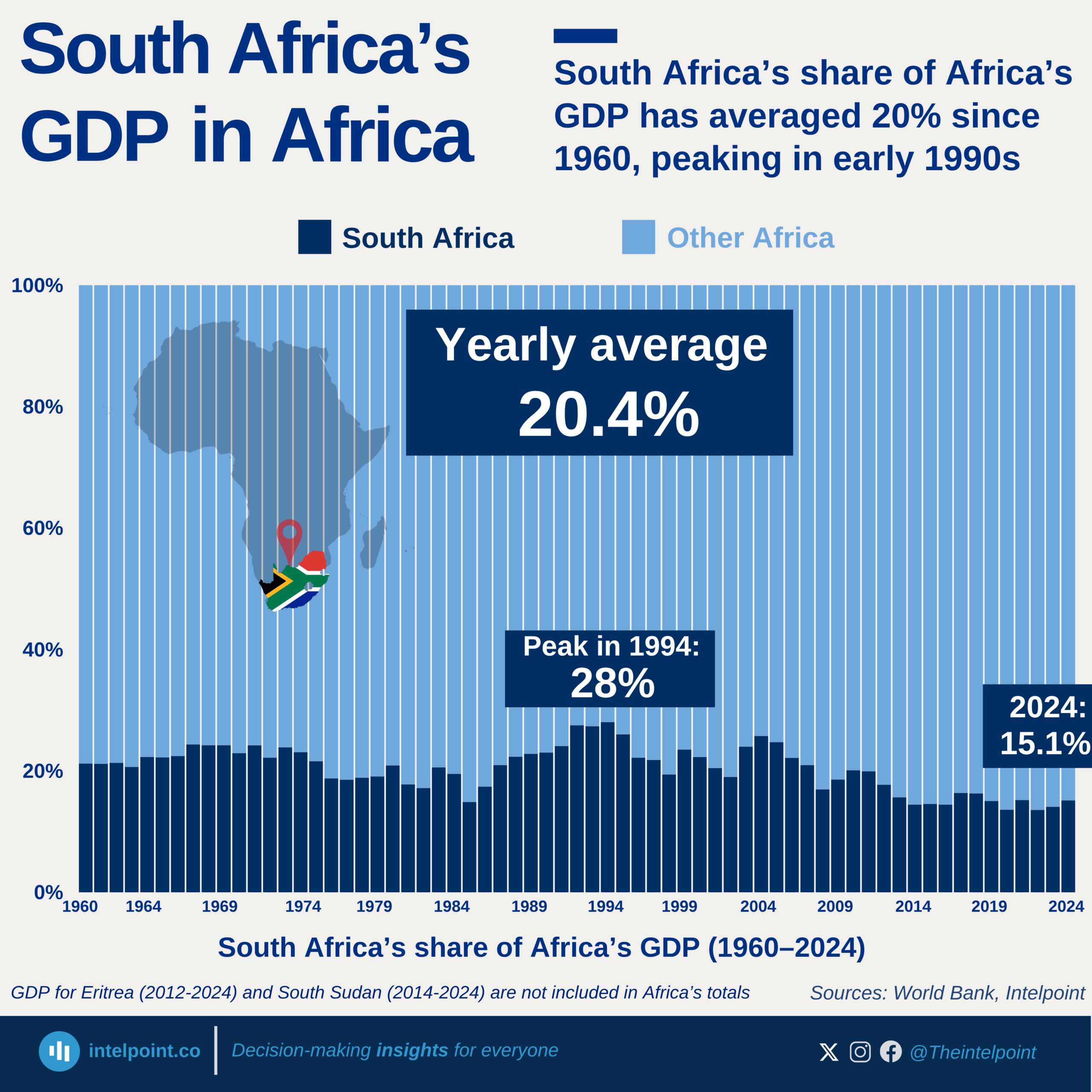Rwanda led Africa with the highest GDP growth rate of 8.89% in 2024. Notably, six West African nations—Niger, Benin, Cabo Verde, Senegal, Côte d'Ivoire, and The Gambia—made the top 10 list for highest real GDP growth. This signals growing economic resilience and momentum in the sub-region, often driven by a mix of infrastructure investment, reforms, and demographic energy.
Nigeria, despite being one of Africa’s largest economies by GDP size, posted a modest 3.43% growth. This shows that size doesn’t always translate to speed. For many Nigerians, this slow growth is felt in the form of limited job creation, sluggish investment, and an ongoing cost-of-living squeeze. Meanwhile, smaller economies like Niger (8.42%) and Benin (7.45%) made outsized gains.
